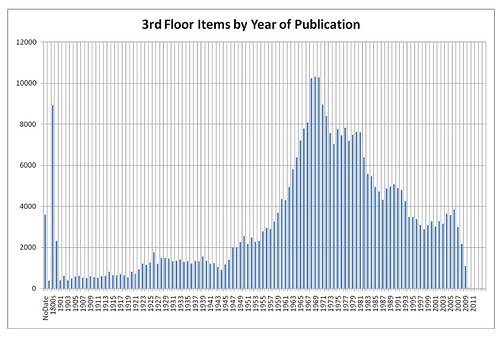I’m sure this isn’t an original thought (so very, very few are), but it was novel enough to me that I needed to write it down…and that’s pretty much what a blog is designed for.
I’ve written and talked about how libraries need to become comfortable with the containers of our new digital content, as since we move into the future the containers (ereader, ipad, tablet) will be important to users. We already know, more or less, how to deal with content. I’ve also been thinking about the interfaces that we use to access this content, and it just hit me:
Print is the only example of a media where the User Interface, Content, and Container have been, historically, the same thing. With music and video, we are completely used to the container, the content, and the user interface each being distinct: we put a tape into a player, which we control with kn0bs or buttons, and the content itself is ethereal and amorphous. With print, until very recently, the content, container, and interface were all the same thing…a book, a magazine, a broadsheet, a newspaper. All are content, container, and interface wrapped into a single unit. This may point to one of the reasons that people seem to feel a deeper connection to print materials than to the 8mm film, or the cassette tape.
I’ve been thinking a lot about these distinctions between container, content, and interface….I think that these three concepts could inform the way that libraries conceptualize what we do, and maybe find better ways to do it.



